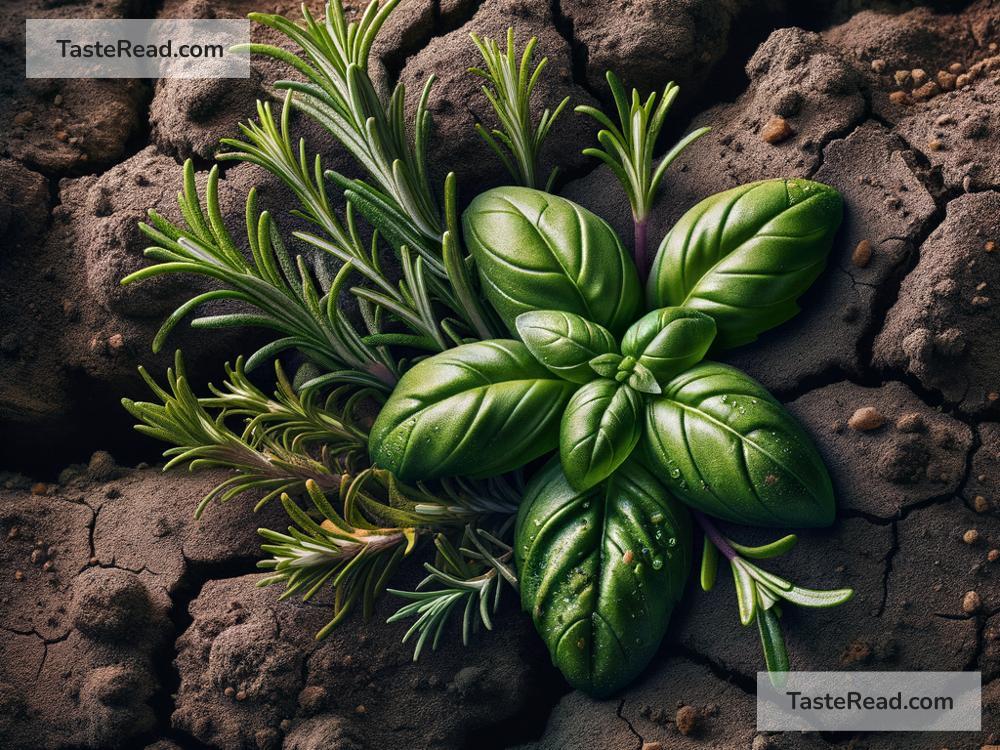How Plant Stress Contributes to the Flavor Intensity of Herbs
Have you ever noticed how homegrown herbs seem to have a deeper, richer flavor compared to the ones you buy at the store? Or perhaps you’ve read that herbs grown in harsher environments pack a stronger punch than those grown in controlled conditions. The secret behind it all lies in something unexpected: plant stress.
Just like humans, plants can experience stress. However, while stress can make people feel anxious or tired, stress for plants can actually increase their resilience—and, interestingly enough, enhance the flavor intensity of herbs. In this blog, we’ll explore how plant stress works and why it leads to more flavorful herbs.
Understanding Plant Stress
Plant stress refers to challenging conditions that disrupt a plant’s normal growth and development. This can happen due to environmental factors such as:
- Water stress: Not getting enough water (drought) or getting too much water (flooding).
- Nutrient stress: Growing in soil that lacks essential nutrients.
- Temperature stress: Being exposed to extremes of heat or cold.
- Light stress: Either too much sunlight or too little.
- Physical stress: Damage caused by wind, pruning, or insects.
While these situations can seem harmful, plants possess an incredible ability to adapt. In many cases, herbs respond to stress by producing chemical compounds that not only help them survive but also crank up their flavor.
The Role of Secondary Metabolites
To understand how stress enhances herb flavor, we must look at something that plants produce naturally: secondary metabolites. These are chemical compounds that plants use to defend themselves against threats like pests, diseases, and harsh environments. Unlike nutrients that primarily fuel growth, secondary metabolites are extra compounds that go toward protection and adaptation.
For herbs such as basil, thyme, mint, oregano, and rosemary, some important secondary metabolites include:
– Essential oils
– Phenols
– Antioxidants
These compounds are responsible for the strong and aromatic flavors of herbs. When plants are stressed, they tend to generate a higher concentration of these metabolites, consequently amplifying their flavor.
Why Stress Equals Flavor Intensity
Imagine this: basil growing in a perfectly watered garden may feel “comfortable.” It doesn’t need to fight off drought, extreme heat, or pests. As a result, it produces just enough essential oils and flavors to grow normally. Now compare that to basil growing in an unwatered patch during a dry season. In this less-than-perfect environment, the plant works harder to survive. It produces more secondary metabolites to protect itself, resulting in stronger, more intense flavors.
This can also explain why herbs grown in their native environments (where conditions may be naturally tough) are often praised for their taste. Mediterranean oregano, for example, thrives in a hot and dry climate, and the stress from this environment pushes the plant to develop its signature bold flavor.
Types of Stress That Boost Herb Flavor
While stress can sometimes be too much for a plant to handle, controlled stress can be beneficial. Farmers and gardeners often use specific techniques to encourage flavorful growth in herbs. Here are a few types of stress that can be purposely introduced:
-
Water Stress
Herbs like thyme, rosemary, and sage don’t require heavy watering to thrive. In fact, slightly restricting water can prompt these plants to produce more essential oils, leading to stronger flavors. This is why Mediterranean herbs are so flavorful—they naturally adapt to dry conditions. -
Pruning Stress
By cutting or pruning herbs, growers encourage the plants to regenerate new leaves. During this regrowth process, the plant may ramp up its production of secondary metabolites, enhancing its aromatic profile. -
Nutrient Stress
When soil is deficient in nutrients like nitrogen, plants may compensate by boosting their production of phenolic compounds. These compounds can create deeper and more complex flavors. However, it’s a delicate balance—too little nutrients and the plant may weaken entirely. -
Temperature Stress
Cold temperatures can sometimes enhance the sweetness or aroma intensity of certain herbs just before harvest. Similarly, hot weather can encourage plants to develop a stronger herbal kick as they fight to endure the heat. -
Light Stress
Some herbs grown under slightly higher sunlight conditions may produce more defensive compounds to handle the extra light. This can contribute to a more pronounced flavor.
Practical Tips for Home Gardeners
If you want to grow herbs with bold and intense flavors, you can apply a few stress techniques in your garden:
- Don’t overwater herbs. Most herbs prefer well-draining soil and moderate watering. Let the soil dry out slightly between waterings to encourage flavors to concentrate.
- Plant in nutrient-poor soils for herbs like oregano and thyme. Avoid over-fertilization, as it can dilute their essence.
- Prune your herbs regularly. Harvest leaves often to stimulate regrowth and boost flavor.
- Stick to native environments. Grow Mediterranean herbs in sunny, warm conditions for the best results.
Final Thoughts
While stress may sound harmful, for herbs it can be a secret weapon to create more intense and flavorful leaves. By producing higher amounts of essential oils and aromatic compounds in response to difficult conditions, stressed plants reward us with rich, bold flavors. Whether you’re growing herbs at home or buying them from specialty markets, consider how the environment shaped their taste. Next time you clip a sprig of mint or rosemary, you’ll know that a little stress made all the difference!


